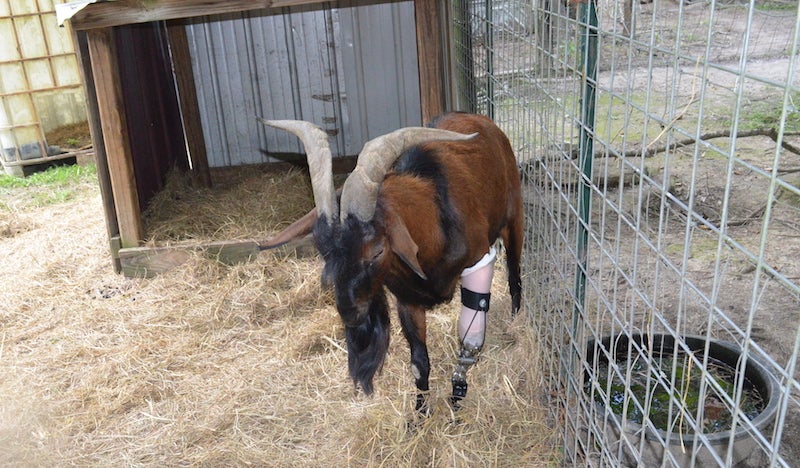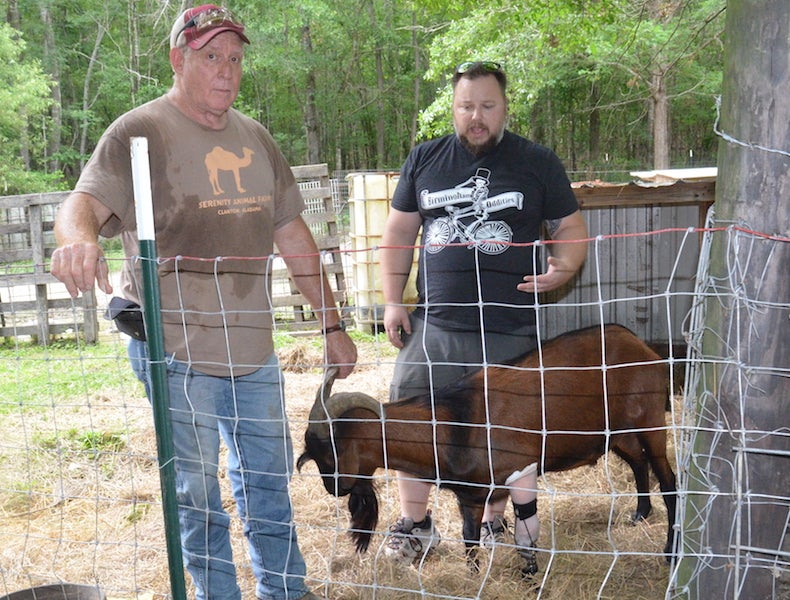Prosthetic to help goat survive
Published 10:47 am Tuesday, May 26, 2020
|
Getting your Trinity Audio player ready...
|
By JOYANNA LOVE/ Managing Editor
When one of Mark Bagley’s goats broke its leg to the point that it had to be amputated, he began looking for a way to help the animal.
Bagley owns Serenity Animal Farm in Clanton. The farm features a variety of creatures and serves as a rescue for exotic animals as well as farm animals.
Adam Williams of Next Step Prosthetics in Alabaster saw a post on social media that Bagley had made requesting help.
“He put out a request and said, ‘We have to amputate this goat’s leg,’” Williams said. “It had broken, and the vet was recommending amputation … The idea here was to try to save the goat.”
Williams thought he could develop an artificial leg for the animal. While humans are most of his clients, Williams does have some experience providing help to cats and dogs that are missing a limb. He said these are usually hind legs, so making one for the goat’s front leg was even more different.
Bagley said the goat got its leg caught in a tree trunk.
“People think goats eat grass,” Bagley said. “Goats don’t eat grass. They are not grazers like sheep. They eat brush. He was standing on his hind legs apparently eating some limbs, got his hoof caught in a fork and spun around and broke it.”
A cast was unsuccessful in helping the leg heal, so the veterinarian recommended amputation.
The goat is an Oberhasli mixed goat and is named Valentino. Bagley estimates that the animal is three years old.
Williams has been out to the farm a few times now trying to get a prototype just right before creating a permanent leg for Valentino.
The process for an animal is very similar to properly fitting a limb for a human.
“We consider their environment,” Bagley said. “We consider their physical need. The way they walk. What their general expectations are going to be.”
The goal is for the prosthetic to be functional and comfortable.
When the goat first had the prosthetic on, he seemed reluctant to put any weight on the artificial limb — having gotten used to his leg not being there. Gradually, he took a few awkward steps as Williams and Bagley discussed possible improvements to the device and the goat’s progress.
“It’s just going to take some time,” Williams said.
The process can take several weeks.
“The prototype is a lot about making sure the limb fits correctly or is aligned to the natural alignment of the body, but it is also a time that the animal can get used to what is going on,” Williams said.
However, he was happy with the progress that Valentino had made.








